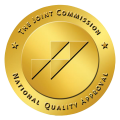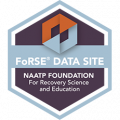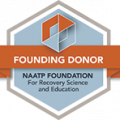In 2005, Congress passed the Combat Methamphetamine Epidemic Act, and meth sales went down considerably. This law made it difficult for people to purchase the ingredients they needed to manufacture meth from their local grocery stores, but Mexican drug cartels filled in the gap. Now, methamphetamine is back.
What is Meth?
Although meth is dangerous, many people are willing to try it because of its effects. For example, meth increases energy levels and causes people to experience euphoria. It also suppresses their appetite, so people concerned about weight control can find meth very alluring.

Also known as “crystal meth”, “ice”, “blue”, and “speed”, meth is a synthetic drug that affects the central nervous system. Similar to amphetamine, it acts as a stimulant that keeps people alert and awake.
People use meth in pill form or by injecting it. The most common way to take it is to smoke it. When someone first uses meth, they experience an intense “high” that’s a rush of energy, alertness, and mental clarity. The high lasts about 30 minutes. The fast heart rate and energy boost last several hours.
At first, users might enjoy those sensations, but the harmful effects of meth use far outweigh any enjoyment. So, meth addiction treatment is both necessary and important for those suffering from addiction to this drug.
How People Get Addicted to Meth
Meth is an easy drug to become dependent on because of its famous “binge-and-crash” effect. This causes users to experience incredible highs and crushing, depressing lows. Because it’s cheap compared to other drugs, it’s easy to get hooked after just a few uses.
Why Is Methamphetamine More Dangerous Than Other Stimulants
The body almost completely metabolizes cocaine. Therefore, cocaine doesn’t remain in the body for long. Methamphetamine stays in the body much longer: Half of the drug still remains after 12 hours. Also, meth does not change very much while it is there. This means that the drug stays within the brain longer, so it can continue to affect brain chemicals.
Cocaine prevents the cells from reabsorbing dopamine. When taken in low doses, meth will also prevent the reabsorption of dopamine, but it also causes the nerve cells to release even more. This causes an increase in the amount of dopamine in the synapses, and it is fatal to the nerve terminals. As methamphetamine destroys the synapses, the user can experience mood disturbances. This is also where a dependency on the drug begins.
Long-term use of methamphetamine destroys the brain’s pleasure center, so the user cannot experience pleasurable feelings without using the drug. The use of meth can also damage blood vessels in the brain, and this can lead to a stroke.
What is Tweaking?
Signs of “Tweaking”
“Tweaking” is another sign that lets you know that a loved one has a problem with methamphetamine. Tweaking is what occurs after a long period of methamphetamine use. This is when the user cannot experience any more “highs” from using this substance.
It refers to the nervous twitches that meth users have, or it can refer to the mood swings. During this time, your loved one may feel confused, irritable, or paranoid and have a strong desire to use the substance again. They may also experience hallucinations or delusions.
Signs of the “Crash”
The crash occurs when the body is withdrawing from meth. While the user is not consuming meth, their sleep is disturbed, they are fatigued and irritable, and they experience cognitive impairments. They also experience anxiety and depression, and their cravings for the drug increase. These symptoms may last one to three days.
Typical Behavioral and Physical Symptoms of Meth Use
Common signs of methamphetamine use include:
- Massive weight loss
- Extreme outbursts
- Rotting teeth
- Unusual sleeping patterns
- Burns on the lips or fingers
- Agitation
- Rapid eye movements
- Skin sores
- Dilated pupils
- Paranoia
- Jerky movements, facial tics, and twitching
- Hyperactivity
A user doesn’t have to take large doses of methamphetamine to experience side effects. Small doses cause users to feel more awake and less hungry. If someone takes too much methamphetamine, they can experience convulsions or an overdose.
Signs of Meth Use
- Anxiety
- Restlessness
- Inability to sleep
- Lack of appetite
- Rapid heartbeat
- High blood pressure
These are just the short-term effects. After a long period of meth use, individuals can develop even more serious problems.
Signs of a Methamphetamine Addiction
The fact that your loved one isn’t trying to hide drug use from you is another sign. Using meth becomes the most important thing in their lives.
Short-Term Side Effects of Methamphetamine Use
- Increased body temperature
- Rapid or irregular heartbeat
- Heavy breathing
- Euphoria
- Loss of appetite
- Decrease in fatigue
- Paranoia
- Hallucinations
- Muscle twitches
- Itching
- Insomnia
- Aggression
- Chest pain
- Anxiety
After consuming methamphetamine, users can experience these effects for eight to 24 hours. Other substances do not produce effects that last this long. If a user binges on meth, they might stay awake for several days in a row.
At any time, methamphetamine can cause sudden death. It can also cause users to experience a heart attack or a stroke. This is especially true if the user already has a heart condition.
Long-Term Side Effects of Methamphetamine Use
Long-term side effects include these psychological symptoms:
- Violent behavior
- Mood disturbances
- Insomnia
- Confusion
- Extreme anxiety

Even after stopping the use of methamphetamine, people can experience psychotic symptoms for several years. If users experienced psychosis before their meth use, they may experience psychotic symptoms during times of stress.
Mental and Physical Consequences of Meth Use
Abusing methamphetamine can have serious long-term consequences on a person’s mental and physical health. While methamphetamine only accounts for 15% of overdose deaths, the rate goes up to 50% when synthetic opiates like fentanyl are added.
Additionally, long-term use of methamphetamine can cause:
- Paranoia
- Memory loss
- “Meth mouth”
- Hallucinations
- Inability to sleep
- Violent behavior
- Extreme weight loss
- Intense itching (Many users have skin sores from uncontrollable scratching)
- Permanent changes to brain function
Some meth users never fully recover their brain’s full function. Some develop brain-related diseases like Parkinson’s later in life.
What Happens to the Brain?
Studies have also shown that meth changes the structure and the functioning of the brain with long-term use. The areas associated with memory and emotion are particularly affected. Researchers believe that this is the reason that methamphetamine users have cognitive and emotional deficits.
Scans of the brains of long-term methamphetamine users showed that dopamine’s ability to bind to its transporters was greatly reduced in the areas where movement and memory occur. These areas can recover after people stop using, however.
Quitting meth also produces other positive effects. After about one year after the last methamphetamine use, biochemical markers for nerve damage return to normal. Neurons within the verbal memory and motor areas of the brain were also able to recover after a year of abstinence. Subjects of research studies performed better on tests of their motor skills and verbal memory.
Physical Side Effects of Long-term Methamphetamine Use
Methamphetamine use is also associated with poor dental hygiene. This may be because the drug causes dry mouth and teeth grinding. Many people experience severe tooth decay and tooth loss.
Methamphetamine Production
Prior to 2005, meth labs were extremely easy to set up because the products needed to create meth could be purchased at the local pharmacy. Users needed products that contained ephedrine or pseudoephedrine so that they could “cook” the meth. The chemicals they needed for the process included camping fuel, starter fluid, hydrochloric or sulfuric acid, metallic lithium, paint thinner, drain cleaner, and anhydrous ammonia. Although these are common products, they are also very dangerous and toxic.
People build meth labs in their homes, but many others build them in the woods, away from prying eyes. When meth is “cooking,” it is a fire hazard because the fumes from these chemicals can easily blow up. After these “chemists” are finished using a particular place as a meth lab, no one can inhabit the house again because it contains so much toxic chemical residue.
Meth labs are dangerous to the environment and to people’s health. For example, the byproducts left over from meth production damage the skin, eyes, mucous membranes, and respiratory tract of anyone in the area. It is common for people who manufacture meth to experience delusions, tremors, insomnia, and asthma.
How Do You Know If Someone Is Addicted to Meth?
- Cravings for methamphetamine
- Psychological or health issues because of meth use
- Spending the majority of their time using meth
- Trying unsuccessfully to reduce or quit using meth
- Increasing the time spent using and the amount of meth used
- Tolerance to meth
- Experiencing withdrawal symptoms after stopping the use of meth
- Developing problems with friends or family because of meth use
- Quitting school or work or neglecting other responsibilities
- Continuing to use meth even though it may be dangerous to themselves or others
If a person meets two or three criteria, the issue with the drug is mild. If someone meets four or five criteria, this person has a moderate issue, but if someone meets six or more of the criteria listed above, it is a sign of a severe meth use disorder.
Where Can You Get Help for Your Meth Addiction?
If you’re trying to quit using meth, you may have tried to do it on your own. That’s unlikely to work. Treating methamphetamine use disorder is extremely difficult. Trying to “just stop using it” will backfire.
Types of Treatment Available
Outpatient Treatment
Most meth users need intensive rehabilitation. If a person chooses an outpatient treatment center, these are some of the options that may be available:
This treatment allows people to continue living at home and going to work or school. Individuals attend counseling sessions during weekend and evening hours. Typically, these include individual and group counseling, family therapy, and weekly support group meetings.
Those in treatment may receive help with a job search or other practical matters. An IOP is a good option for people in the early stages of addiction who want to stay home or continue working.
Treatment begins with a thorough assessment of the patient’s physical, mental, and emotional symptoms. If an individual is taking any prescription medications, the staff will take note of this and see to it that the individual’s needs are met.
Treatment plans include counseling with proven, evidence-based therapies like cognitive-behavioral therapy (CBT), group counseling, 12-step support groups, life skills training, and holistic therapies.
Individuals are less likely to relapse if they have a solid aftercare plan. People who are in need of treatment should seek a program that offers ongoing counseling and the chance to live in a sober home.
Recovery is Possible at First City Recovery in Kokomo, Indiana

When you try to stop, you may experience the following withdrawal symptoms:
- Insomnia
- Anxiety
- Fatigue
- Psychosis
- Extreme cravings
- Changes in appetite
- Pain and spasms in the muscles
- Headaches
- Dehydration
These symptoms will last for approximately two weeks. As time goes on, you can also experience long-term withdrawal symptoms, such as:
- Cognitive problems
- Anxiety
- Cravings
- Irregular sleeping patterns
- Depression
The withdrawal symptoms may be too unpleasant to tolerate, but in our medical detox program, our healthcare professionals will administer medications that will relieve these symptoms. After medical meth detox, we can place you or your loved one in a treatment program.
Our intensive day program is the best choice for someone who has a substance use disorder that is advanced. In this program, clients spend eight hours a day in therapy learning how to deal with cravings and how to address past traumas that led to their drug use. For someone who needs less assistance because they have a strong family support system in place, our outpatient program would be more appropriate.
No matter which treatment option you choose, we can help you. Sobriety is possible. Contact us at First City Recovery Center today.

















